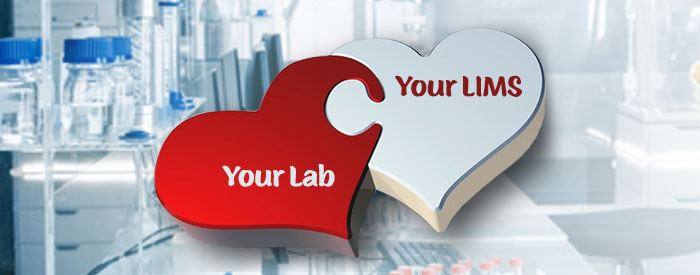The Laboratories’ Guide to Getting a LIMS You’ll Love

It’s that time of year again when almost everyone remembers that love is possible and should be celebrated. We’re here to tell you that love and LIMS can occupy the same headspace, but, like everything worth having in life, it takes work. With the right care and attention applied to all stages of your relationship, you, too, can have a fairy-tale ending to your LIMS implementation. There are a number of steps you should take to be sure you’ve covered all your bases so that you can put your best foot forward and are ready to search for a LIMS suitor. Hold on to your hearts; we’re going to give you the straight talk about what’s really going to happen on the path to true LIMS love.
The Debutante Ball (A.K.A. Lab Optimization)
When It’s time to take that first step away from paper processes and toward a LIMS for more efficiencies, the lab must first prepare itself to accept the upcoming changes to existing processes. This preparation work will involve streamlining and harmonizing processes and methods, as well as cleaning up your data so that when the new LIMS arrives in your life it will be welcomed and appreciated. You’ll want to be sure that all potential users are educated about the LIMS implementation process and have realistic expectations about what a LIMS will and will not do for your lab.

The Dating Scene (A.K.A. LIMS Vendor Assessments)
We cannot stress enough how important it is to date around before you make a choice about which LIMS is right for your lab. We recommend that you begin by developing an initial set of user requirements so you can determine which vendors are princes and which are just frogs. During this time, you’ll want to look forward and decide what you want from your LIMS relationship over the next three to five years or more. These requirements also will help you reflect on what features your LIMS perfect match should have for it to be a success in your lab. For this process, you can enlist the help of your besties (aka third-party consultants) if you need feedback or support along the way.
There’s no benefit in thinking about the dating process as painful. Consider it a necessary part of the journey to informatics success, and recognize that each encounter—whether it goes well or not—teaches you a bit more about what you want from your LIMS. Submit your requests for proposal (not THAT kind of proposal) to a number of vendors; as many as time and resources permit. Most should offer demos, so you can choose three to five to evaluate against your initial requirements.
Additional Reading: Making LIMS RFPs Effective
The Rose Ceremony (A.K.A. LIMS Selection)
After you’ve had a chance to swim around the dating pool and assess the various LIMS products available to you—and you’ve cleaned up your lab’s processes to the fullest extent possible—you’re ready to make an informed choice. By this point, the demos you’ve seen will have given you a much better sense of what you want from your LIMS relationship. You can bring the shortlist to stakeholders with clear-eyed confidence, knowing you have researched the pros and cons of each and have a solid justification for all of your choices.
Leading up to the final rose ceremony is the time to ask the tough questions of your lab and of a potential vendor.
- Do the end users in your lab really understand the magnitude of the changes that will be made to workflows and processes?
- Will your choice of vendor be as committed to your LIMS implementation as you are, have the same definition of success, and be a true partner in all stages of this process?
- Will your vendor validate the additional configuration or customization your lab will need?
If the answers to these questions aren’t exactly what you need to hear, move on. There are plenty of LIMS in the sea.

Meeting The Parents (A.K.A. LIMS Stakeholder Buy-In)
Ensuring that everyone is on board with your choice and willing to support you and the new LIMS is the next important step. Our experience has shown that if you don’t get stakeholder buy-in, your LIMS relationship will be rocky and could end in divorce. At this stage, you will be able to refine your user requirements to foster an open and honest relationship between your LIMS and its users. Knowing what the users outside the lab will need from the LIMS in terms of sample generation, reporting, and forecasting will help in this process.
A LIMS implementation is much bigger than signing the contract and making it through go-live without feeling nauseated. You will need the approval of your experienced lab staff, as well as the folks who’ll provide financial support. You can ensure that this part goes smoothly by soliciting feedback early and often. (Think of this as making nice with the in-laws. It’s worth the effort.)
Don’t forget your siblings—the IT department. Your communication with these essential members of your team can make or break your LIMS implementation because they are the ones who will provide and maintain the infrastructure, and they will be there first when things go wrong.
The Prenuptial Agreement (A.K.A. Your LIMS Implementation Scope Of Work)
Once you’ve made your choice and gotten stakeholder buy-in, the least romantic part of this process will begin. But the work you’ve put in up to this point, and the work you do now, will save everyone from heartache when the big day arrives.
At this point, your user requirements should be thoroughly refined. Your chosen vendor or third-party implementer will have a good idea of how much configuration or customization will be needed to develop their product into the LIMS of your dreams. Agreeing on the scope of work (SOW) will involve some give and take, but at this point, you shouldn’t need to make huge compromises. If you’ve come this far, you can be confident that you are with the right LIMS.
The SOW becomes a key instrument throughout the implementation process. It can be referred to whenever the inevitable changes in the relationship occur. Sometimes it takes a while for a partner’s true colors to appear, and you can be sure that scope creep will work its way into the implementation at some point. The SOW functions as your guide and assurance that each party has agreed on what is necessary for success, a reminder that everyone is committed to giving 100% to the LIMS implementation, and a framework to ensure that no one strays too far.
If your LIMS will be operating in a regulated environment, the validation process should be included in the SOW with details about which party will perform which testing. Don’t forget to spell out who is responsible for ensuring that the configurations and customizations are thoroughly validated, even the ones that get added during the implementation process.
Settling In For The Long Haul (A.K.A. LIMS Go-Live And Support)
Congratulations! The big day has finally arrived. The ceremony’s over, the doves have flown home, most likely no one threw up, and reality may be setting in. The hard work of making the relationship with your LIMS work as part of the everyday life of your lab is just beginning.
There will be some rough patches as everyone adjusts to new ways of doing things. Sometimes change is hard. You may find that it helps to engage your besties or a relationship counselor (like a neutral third-party consultant) to help you through the initial postimplementation phase with organizational change management support for when the blinders come off. Something that CSols does for clients is to facilitate communication with the end-users and manage expectations around the new workflows and processes. In-depth training may not be something that your LIMS vendor provides, and that’s OK. All healthy relationships need external support to thrive.
Achieving Marital Bliss (A.K.A. Maintenance And Upgrades)
A LIMS is a significant investment, so it makes sense that you’d want to get as many years of happiness from it as possible. All good relationships require continual maintenance and effort. As your lab family grows and you add instruments, staff, or new product lines, you may find that your LIMS no longer meets your needs and you might want to move to a more spacious version via an upgrade. Allowing your LIMS to grow with your organization is a great way to ensure that it continues to provide value.
Keep things fresh by making the necessary changes when issues come up. Don’t be afraid to try new things, like interfacing more instruments, developing additional reports, or adding modules to provide functionality. It’s easy to get lulled into a comfortable routine where the LIMS operates in the background and everyone assumes that its functions are good enough. Check in with your LIMS users and stakeholders periodically just to catch the minor annoyances that can turn into big issues over time. A periodic lab systems audit is a best practice. You won’t regret making that effort to notice what’s working well or find little ways to keep your LIMS operating at peak performance.
How was your LIMS dating process? Are you in love with your LIMS or are you ready to throw in the towel?


















